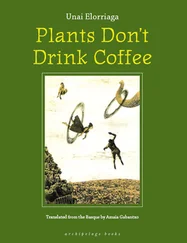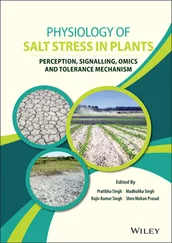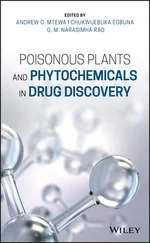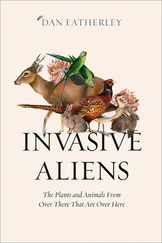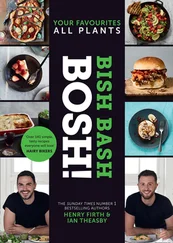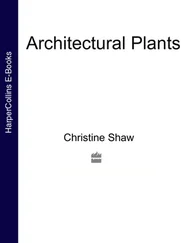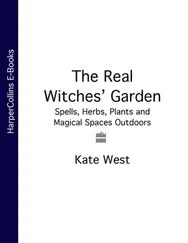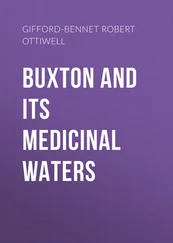43 Morrison, R.T. and Boyd, R.N. (1973). Organic Chemistry, 3e. Boston, MA: Allyn and Bacon.
44 Murashige, T. and Skoog, F. (1962). A revised medium for rapid growth and bioassays with tobacco tissue cultures. Physiol. Planta 15: 473–497.
45 Muthu, C., Ayyanar, M., Raja, N., and Ignacimuthu, S. (2006). Medicinal plants used by traditional healers in Kancheepuram district of Tamil Nadu, India. J. Ethnobiol. Ethnomed. 2: 43.
46 Nadkarni, A.K. (1954). Indian Materia Medica. Bombay: Popular Book Depot.
47 Nisha, M.C. and Rajeshkumar, S. (2010). Survey of crude drugs from Coimbatore city. Indian J. Nat. Prod. Resour. 1: 376–383.
48 Oksman-Caldentey, K.M. and Arroo, R. (2000). Regulation of tropane alkaloid metabolism in plant cell cultures. In: Metabolic Engineering of Plant Secondary Metabolism (ed. R. Verpoorte), 254–281. the Netherlands: Kluwer Academic Publishers.
49 Pagare, S., Manila Bhatia, M., Tripathi, N. et al. (2015). Secondary metabolites of plants and their role: overview. Curr. Trends Biotechnol. Pharm. 9: 294–305.
50 Pandey, D.P., Rather, M.A., Nautiyal, D.P., and Bachheti, R.K. (2011). Phytochemical analysis of Abutilon indicum. Int. J. ChemTech Res. 3: 642–645.
51 Piel, J. (2010). The chemistry of symbiotic interactions. In: Comprehensive Natural Products II: Chemistry and Biology, vol. 2 (eds. H.-W. Liu and L. Mander), 475–510. Elsevier Science.
52 Pistelli, L., Giovannini, A., Ruffoni, B. et al. (2010). Hairy root cultures for secondary metabolites production. Adv. Exp. Med. Biol. 698: 167–184.
53 Poonkothai, M. (2006). Antibacterial activity of leaf extract of Abutilon indicum. Anc. Sci. Life 26: 39–41.
54 Porchezhian, E. and Ansari, S.H. (2005). Hepatoprotective activity of Abutilon indicum on experimental liver damage in rats. Phytomedicine 12: 62–64.
55 Ramachandran, J. (2008). Herbs of Siddha Medicine/The First 3D Book on Herbs. Chennai, India: Murugan Pathippagam.
56 Randhir, R., Lin, Y.T., and Shetty, K. (2004). Stimulation of phenolics, antioxidant and antimicrobial activities in dark germinated mung bean sprouts in response to peptide and phytochemical elicitors. Process Biochem. 39: 637–646.
57 Rao, K., Chodisetti, B., Gandi, S. et al. (2016). Regeneration-based quantification of coumarins (scopoletin and scoparone) in Abutilon indicum in vitro cultures. Appl. Biochem. Biotechnol. 180: 766–779.
58 Richard, T., Temsamani, H., Cantos-Villar, E., and Monti, J.-P. (2013). Application of LC–MS and LC–NMR techniques for secondary metabolite identification. Adv. Bot. Res. 67: 67–98.
59 Robles-Sanchez, R.M., Rojas-Grau, M.A., Odriozola-Serrano, L. et al. (2009). Effect of minimal processing on bioactive compounds and antioxidant activity of fresh-cut ‘Kent’ mango (Mangifera indica L.). Postharvest Biol. Technol. 51: 384–390.
60 da Rocha, C.A.M. (2013). Bioactive compounds from zoanthids (Cnidaria: Anthozoa): a brief review with emphasis on alkaloids. Int. Res. J. Biochem. Bioinf. 3: 1–6.
61 Sajjalaguddam, R.R. and Paladugu, A. (2015). Phenylalanine enhances quercetin content in in vitro cultures of Abutilon indicum L. J. Appl. Pharm. Sci. 5: 80–84.
62 Scott Obach, R. and Kalgutkar, A.S. (2010). Reactive electrophiles and metabolic activation. In: Comprehensive Toxicology (ed. C.A. McQueen), 309–347. Elsevier Science.
63 Seetharam, Y.N., Chalageri, G., Setty, S.R., and Bheemachar (2002). Hypoglycemic activity of Abutilon indicum leaf extracts in rats. Fitoterapia 73: 156–159.
64 Seigler, D.S. (1998). Benzoquinones, naphthoquinones, and anthraquinones. In: Plant Secondary Metabolism (ed. D.S. Seigler), 76–93. Boston, MA: Springer.
65 Selvam, K., Arunprakash, S., Selvankumar, T. et al. (2012). Antioxidant prospective and secondary metabolites in Abutilon indicum at different environment. Int. J. Pharm. Sci. Res. 3: 2011–2017.
66 Shanthi, K., Gowri, P., and Gopu, M. (2011). Pharmacognosy, analysis of bio-active compounds form Abutilon indicum Linn. (Malvaceae) by using gas chromatography and mass spectrometry (GC-MS) in ethanol and hexane solvent. J. Pharm. Res. 44: 4795–4797.
67 Sharma, P.V. and Ahmad, Z.A. (1989). Two sesquiterpene lactones from Abutilon indicum. Phytochemistry 28: 3525.
68 Sofowora, A. (1982). Medicinal Plants and Traditional Medicine in Africa. New York, NY: Wiley.
69 Subramanian, S.S. and Nair, A.G.R. (1972). Flavonoids of four malvaceous plants. Phytochemistry 11: 1518–1519.
70 Swanson, B.G. (2003). Tannins and polyphenols. In: Encyclopedia of Food Sciences and Nutrition (ed. B. Caballero), 5729–5733. London: Academic Press.
71 Tirumalasetty, J., Shankar, Nutalapati, C. et al. (2011). Evaluation of anti-anxiety property of alcoholic extract of Abutilon indicum leaves in albino mice. Int. J. Pharm. Phytopharm. Res. 2: 397–399.
72 Tolossa, K., Debela, E., Athanasiadou, S. et al. (2013). Ethno-medicinal study of plants used for treatment of human and livestock ailments by traditional healers in South Omo, Southern Ethiopia. J. Ethnobiol. Ethnomed. 9: 32.
73 Tripathi, P., Chauhan, N.S., and Patel, J.R. (2012). Anti-inflammatory activity of Abutilon indicum extract. Nat. Prod. Res. 26: 1659–1661.
74 Ushakumari, J., Ramana, V.V., and Reddy, K.J. (2012). Ethnomedicinal plants used for wounds and snake-bites by tribals of Kinnerasani region, A.P., India. Pharmacogn. J. 3: 79–81.
75 Vattem, D.A., Randhir, R., and Shetty, K. (2005). Cranberry phenolics-mediated antioxidant enzyme response in oxidatively stressed porcine muscle. Process Biochem. 40: 2225–2238.
76 Velderrain-Rodríguez, G.R., Palafox-Carlos, H., Wall-Medrano, A. et al. (2014). Phenolic compounds: their journey after intake. Food Funct. 5: 189–197.
77 Verpoorte, R. and Alfermann, A.W. (2000). Metabolic Engineering of Plant Secondary Metabolism. Dordrecht, the Netherlands: Kluwer Academic Publishers.
78 Vincken, J.P., Heng, L., de Groot, A., and Gruppen, H. (2007). Saponins, classification and occurrence in the plant kingdom. Phytochemistry 68: 275–297.
79 Wang, B., Zhang, G., Zhu, L. et al. (2006). Genetic transformation of Echinacea purpurea with Agrobacterium rhizogenes and bioactive ingredient analysis in transformed cultures. Colloids Surf., B 53: 101–104.
80 Winkel-Shirley, B. (2001). Flavonoid biosynthesis. A colorful model for genetics, biochemistry, cell biology, and biotechnology. Plant Physiol. 126: 485–493.
81 Woods, N., Niwasabutra, K., Acevedo, R. et al. (2017). Natural vaccine adjuvants and immunopotentiators derived from plants, fungi, marine organisms, and insects. In: Immunopotentiators in Modern Vaccines (eds. V.E.J.C. Schijns and D.T. O'Hagan), 211–229. London: Academic Press.
82 Yasmin, S., Kashmiri, M.A., Ahmad, I. et al. (2008). Biological activity of extracts in relationship to structure of pure isolates of Abutilon indicum. Pharm. Biol. 46: 673–676.
83 Yasmin, S., Kashmiri, M.A., Asghar, M.N. et al. (2010). Antioxidant potential and radical scavenging effects of various extracts from Abutilon indicum and Abutilon muticum. Pharm. Biol. 48: 282–289.
84 Yineger, H. and Yewhalaw, D. (2007). Traditional medicinal plant knowledge and use by local healers in Sekoru District, Jimma Zone, Southwestern Ethiopia. J. Ethnobiol. Ethnomed. 3: 24.
85 Yoganarsimha, N.S. (2000). Medicinal Plant of India. Bangalore: Cyber Media.
86 Zhang, L., Ding, R., Chai, Y. et al. (2004). Engineering tropane biosynthetic pathway in Hyoscyamus niger hairy root cultures. Proc. Natl. Acad. Sci. U.S.A. 101: 6786–6791.
2.2 Acacia Species
2.2.1 Ethnopharmacological Properties and Phytochemistry
Acacia arabica (Lam.) Willd. (Fam. – Mimosaceae) is used in treatment of various diseases including diabetes and skin diseases and is considered as an astringent, demulcent, aphrodisiac, anthelmintic, and antimicrobial and antidiarrheal agent, with good nutritional value in traditional medicine of India (Chopra et al. 1956; Jain et al. 1987 2005; Rajvaidhya et al. 2012), and an effective remedy for malaria, sore throat, and toothache (Joshi 2007; Kubmarawa et al. 2007). The bark decoction of Acacia catechu mixed with milk is used for cure of cold and cough, in combination with opium, which helps in curing severe diarrhea. The katha from A. catechu applied on lemon slice coated with catechu is recommended as remedy to treat (with empty stomach) piles in patients. It is also used in curing of mouth ulcers and body pains. The heartwood is boiled with water, and the prepared decoction is recommended for pregnant women to keep their body warm during cold seasons as well as to help in child delivery and milk secretion. It is also applied externally on ulcers, boils, skin eruptions, and gums as disinfectant (Chowdhury et al. 1983; Singh and Lal 2006). Acacia nilotica is therapeutically used as antiscorbutic, astringent, antioxidant, natriuretic, antispasmodic, and diuretic for intestinal pains and diarrhea, nerve stimulant, colds, congestion, coughs, dysentery, and fever (Saini 2008); the seeds have antimalarial, antidiabetic, and antihypertensive properties. The leaves and pods are an excellent fodder with anti-inflammatory, molluscicidal, and algicidal properties, while the bark is recommended for the treatment of hemorrhages, cold, diarrhea, tuberculosis, and leprosy. The quercetin 3-galactosyl and flavones are isolated from this plant species and showed antibacterial (against Bacillus subtilis, Escherichia coli, Neisseria gonorrhoeae , Pseudomonas aeruginosa, Staphylococcus aureus bacterial species) and anti-inflammatory activities (Bashir et al. 2014; Stoh and Bagchi 2015). Acacia ataxacantha showed significant antioxidative property that could be used in pharmaceutical and food preparations (Amoussa et al. 2015).
Читать дальше

